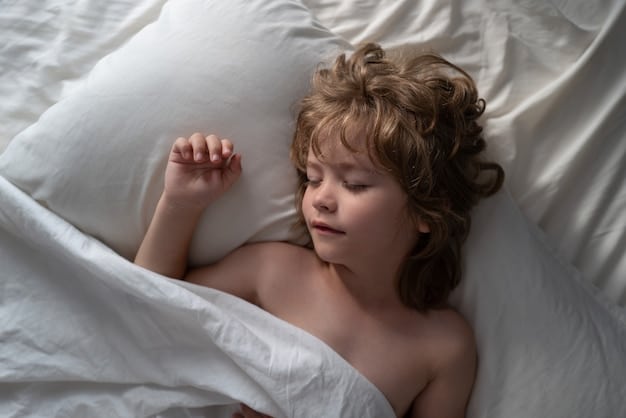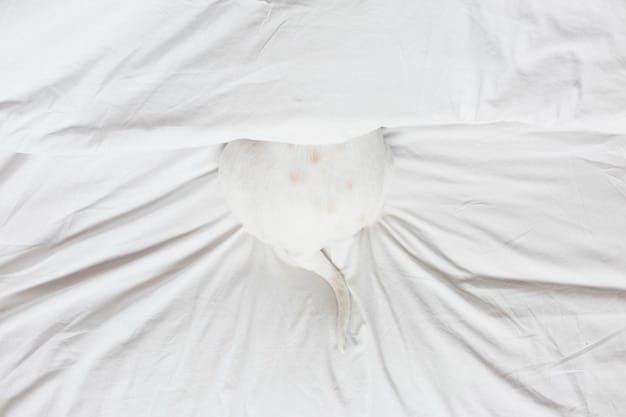Alert: Is Your Child’s Mattress Causing Sleep Problems? 3 Signs to Watch For

Is your child struggling to sleep restfully? The culprit might be their mattress, leading to discomfort, allergies, or inadequate support, which can negatively impact their overall health and development.
Is your child tossing and turning all night? Are they complaining about aches and pains after waking up? The problem might be lurking right under them – their mattress. This article will explore the potential issues a mattress can cause, offering three key signs to watch for.
Recognizing Sleep Problems in Children
Sleep is vital for growing children, and any disruption can lead to various health and behavioral issues. Identifying these problems early is crucial for addressing the underlying cause effectively. Recognizing these problems can be the first step in ensuring your child has a peaceful nights rest.
Common Sleep Problems in Children
Poor sleep can manifest in several ways. Frequent night awakenings, difficulty falling asleep, and daytime sleepiness are some of the most common indicators. Addressing these issues involves understanding the root causes, which may include their mattress.
The Importance of Quality Sleep
Quality sleep supports physical growth, cognitive development, and emotional regulation in children. A lack of sufficient rest can lead to decreased academic performance, behavioral problems, and weakened immune function. Therefore, ensuring a comfortable and supportive sleep environment is essential.
- Nighttime Awakenings: Frequent waking disrupts sleep cycles.
- Daytime Fatigue: Lack of energy and difficulty concentrating during the day.
- Irritability: Increased moodiness and emotional sensitivity.
- Difficulty Concentrating: Reduced focus and attention span.
Recognizing early signs of sleep disturbances is the first step in correcting issues that may be hindering childhood development. By addressing any problems, such as an inadequate mattress, you can actively contribute to your child’s health.
Sign 1: Visible Wear and Tear on the Mattress
A mattress that is old or worn out may not provide the support and comfort your child needs for restful sleep. Visible signs of wear and tear—such as sagging, lumps, or tears—can indicate a need for a replacement. These signs are usually obvious and signal that the mattress is no longer performing its intended function.

How Wear and Tear Affects Sleep
Mattress degradation can affect sleep quality by reducing support and creating uneven sleeping surfaces. This can lead to discomfort and tossing and turning throughout the night, preventing deep, restorative sleep for the child. Ensuring your child has a proper, stable, form mattress can result in a good nights rest.
Checking for Common Signs of Damage
Regularly inspect your child’s mattress for any visible damage. Look for sagging in the middle, which indicates loss of support. Check for lumps or coils that can be felt through the surface. Also, examine the fabric for tears, stains, or signs of pest infestations. Early discovery of the issue can result in immediate solutions for the child.
- Sagging: Loss of support in the center of the mattress.
- Lumps: Uneven surfaces that cause discomfort.
- Tears: Damage to the fabric that can expose inner materials.
- Stains: Potential allergen or bacteria buildup.
By checking for wear and tear, you can determine the effectiveness of your child’s mattress. Addressing early signs of deterioration should be done to make sure your child is getting a good form of sleep.
Sign 2: Increased Allergy Symptoms
Mattresses can accumulate allergens such as dust mites, mold, and pet dander over time. These allergens can cause or exacerbate allergy symptoms, leading to sleep disturbances. A mattress can be a breeding ground for unwanted allergens that the child can potentially be breathing in. This can disrupt the nights sleep.

Allergens Found in Mattresses
Dust mites are a common allergen found in mattresses. These microscopic creatures thrive in warm, humid environments and feed on dead skin cells. Mold and pet dander can also accumulate, especially in households with pets or high humidity levels. Taking preventative measures towards these issues is important in keeping the child safe.
How Allergies Disrupt Sleep
Allergy symptoms such as sneezing, coughing, itchy eyes, and skin rashes can significantly disrupt sleep. Nasal congestion can make it difficult to breathe, leading to frequent awakenings. Mattresses can be the initial problem of constant irritations that can lead to sleep disturbances.
- Sneezing and Coughing: Irritation of the respiratory system.
- Itchy Eyes: Allergic reaction to airborne particles.
- Skin Rashes: Irritation from direct contact with allergens.
- Nasal Congestion: Difficulty breathing due to blocked nasal passages.
When caring for a child, checking for allergy problems and symptoms is important. Eliminating the potential allergen issue in the mattress can ensure a more restful nights sleep.
Sign 3: Complaints of Discomfort and Pain
If your child frequently complains of discomfort, back pain, or neck pain upon waking, their mattress may not be providing adequate support. A suitable mattress should align the spine and support the body’s pressure points, promoting healthy sleep. Complaining about body pain can be a major indicator with children; its important to properly address the issues.
The Necessity of Proper Spinal Alignment
A mattress that doesn’t support proper spinal alignment can lead to muscle strain and joint pain. The spine should maintain its natural curvature during sleep to prevent discomfort. It may be time to swap their old mattress for a new one, depending on how old the original is.
Identifying Common Pain Areas
Common areas of pain due to an unsuitable mattress include the back, neck, and shoulders. Children may report stiffness or soreness in these areas, particularly in the morning. These areas should be checked with your child to pinpoint the source of the aches and pains. If there is a pattern you many want to see a physician.
- Back Pain: Discomfort in the lower or upper back.
- Neck Pain: Stiffness and soreness in the neck region.
- Shoulder Pain: Aching or tenderness in the shoulders.
- Hip Pain: Discomfort in the hips from inadequate support.
Checking with your child about how they are feeling is an important step in sleep health. Making sure the mattress is not causing any pain or discomfort should be considered when asking about their sleep heath.
Choosing the Right Mattress for Your Child
Selecting the right mattress for your child is essential for their sleep and overall health. Consider factors like mattress type, firmness, and material to ensure optimal support and comfort. This can assist in long term development and sleep health.
Types of Mattresses
There are several types of mattresses available. Foam mattresses provide contouring and pressure relief; innerspring mattresses offer support with coils; hybrid mattresses combine both foam and coils for a balance of comfort and support. Foam mattresses can usually conform to the child’s body easier and they can be cost friendly.
Understanding Firmness Levels
The ideal firmness level depends on your child’s age, weight, and sleeping position. Younger children and stomach sleepers may benefit from a firmer mattress, while older children and side sleepers might prefer a medium-firm option. Mattresses come in a bunch of different forms; finding what works for the child is the key element in making this decision.
- Foam Mattresses: Provide contouring and pressure relief.
- Innerspring Mattresses: Offer support with coils.
- Hybrid Mattresses: Combine both foam and coils.
- Latex Mattresses: Durable and hypoallergenic.
When choosing the mattress, take all the factors in mind. Taking the time to find the proper mattress can greatly improve the child’s sleep heath.
Maintaining a Healthy Sleep Environment
Creating an environment that supports restful sleep for your child goes beyond just the mattress. Factors such as lighting, temperature, and noise levels can significantly impact sleep quality. The overall environment can be just as crucial as the mattress itself.
Optimizing Sleep Conditions
Keep the bedroom dark, quiet, and cool. Use blackout curtains to block out light, and consider a sound machine to mask any disruptive noises. A cooler room temperature can also promote better sleep. Creating the right environment is key to a nights peaceful rest.
Establishing a Sleep Routine
A consistent sleep routine can help regulate your child’s internal clock and make it easier for them to fall asleep. Establish a regular bedtime and wake-up time, even on weekends. Its been proven a routine can prepare the body for the resting process.
- Dark Room: Minimizes light exposure.
- Quiet Environment: Reduces disturbances.
- Cool Temperature: Promotes relaxation.
- Consistent Bedtime: Regulates the body’s natural sleep-wake cycle.
The environment where your children are sleeping is very important contributing factor to a good nights rest. Addressing all the aspects of a healthy sleep environment, you can ensure restful sleep for your children.
Seeking Professional Advice
If you’ve addressed potential mattress issues and sleep hygiene practices but your child is still experiencing sleep problems, it may be time to consult a healthcare professional. Some problems may be out of your control.
When to Consult a Doctor
If sleep disturbances persist or are accompanied by other symptoms like snoring, sleep apnea, or behavioral changes, seek medical advice. A healthcare provider can assess for underlying medical conditions and recommend appropriate interventions. When problems do not subside, its smart to seek an outside source that you can trust.
Professional Sleep Assessments
Sleep studies can help diagnose sleep disorders and identify specific sleep-related problems. These assessments provide valuable insights into sleep patterns and can help guide treatment. A sleep study is a great way to get a better perspective on whats going on.
- Persistent Sleep Disturbances: Ongoing problems despite interventions.
- Snoring and Sleep Apnea: Potential breathing-related sleep disorders.
- Behavioral Changes: Sleep deprivation affecting behavior.
- Underlying Medical Conditions: Health issues impacting sleep.
Seeking outside profession assistance is smart to do if you have exhausted majority of you options. Always check in with trusted professionals.
| Key Point | Brief Description |
|---|---|
| 🛏️ Mattress Wear | Check for sagging, lumps, or tears indicating it’s time for a replacement. |
| 🤧 Allergy Symptoms | Increased sneezing, coughing, or skin rashes may signal allergens in the mattress. |
| 🤕 Discomfort | Frequent complaints of back, neck, or hip pain suggest inadequate mattress support. |
| 😴 Sleep Routine | Consistent sleep schedule can help improve children’s sleep quality. |
FAQ
▼
Mattresses should typically be replaced every 7-10 years, but this depends on the mattress’s condition and use. Check for wear and tear and any signs of reduced comfort or support regularly.
▼
Use allergen-resistant mattress covers, wash bedding frequently in hot water, and vacuum the mattress regularly. Consider using an air purifier in the bedroom to reduce airborne allergens.
▼
A medium-firm mattress that provides adequate support and spinal alignment is generally best. Foam or hybrid mattresses can be good choices, depending on your child’s specific needs.
▼
Yes, a poor mattress affecting sleep quality can lead to daytime fatigue, irritability, and difficulty concentrating, impacting your child’s behavior and academic performance.
▼
Absolutely. A high-quality mattress supports better sleep, spinal health, and overall well-being. It is a worthwhile investment in your child’s health and development.
Conclusion
Identifying whether your child’s mattress is contributing to sleep problems is key to ensuring their well-being. By watching for wear and tear, monitoring allergy symptoms, and heeding complaints of discomfort, you can take proactive steps to improve their sleep. Selecting a suitable mattress and maintaining a healthy sleep environment can significantly enhance your child’s rest and overall health.





